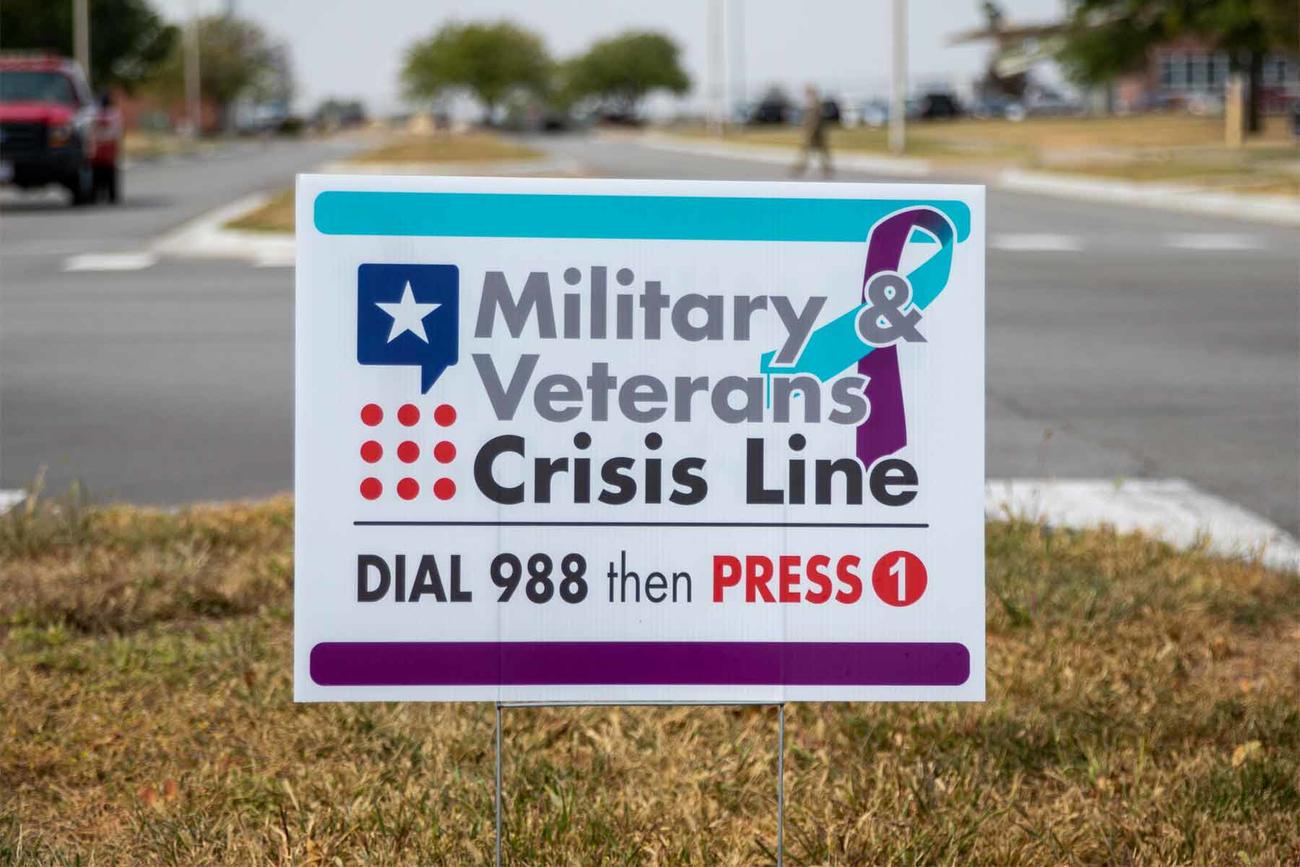

The transition of the Veterans Crisis Line to the three-digit “988, press 1” option proved to be a success, although the Department of Veterans Affairs should improve staff support and supervision, a VA Office of Inspector General review has found.
The VA, along with the National Suicide Prevention Lifeline, switched from a 10-digit number to 988 in July 2022, with the Veterans Crisis Line accessed after dialing the three-digit number and pressing one.
At the time, VA officials believed they would see an increase of 122% to 154% in calls and moved to hire additional personnel to ensure there would not be any issues with the transition, according to a report published Thursday by the VA’s top watchdog.
Calls did increase, but only by roughly 27%, and the line was equipped to handle the demand, according to the inspector general. But the office found that the responders could still use more support, especially after they handle a traumatic case, including suicide.
The VA inspector general found that roughly 72% of the staff said they were aware of support services provided by the VA following trauma, known as “postvention services,” and the same percentage felt they were supported by their supervisors to get that help.
That number should be closer to 100%, according to inspector general analysts.
Veterans Crisis Line “staff would benefit from awareness and training regarding postvention resources,” they wrote.
The inspector general also raised concerns about the number of supervisors at the line, which is headquartered in Canandaigua, New York. According to the report, before the 988 number was adopted, the ratio was roughly 1 supervisor for every 10 staff members. During the OIG review, which took place from 2020, before implementation, through 2023, inspectors found that a supervisor was responsible for roughly 20 staff members, although the OIG noted that the number was not static throughout the review period.
“Having one supervisor overseeing, assessing and mentoring approximately 20 responders may impact the [Veterans Crisis Line’s] ability to identify call concerns and promote enhanced call quality,” wrote Dr. John Daigh, assistant inspector general for health care inspections.
The 988 number was first proposed in 2020 as the nationwide phone number for mental health and behavioral crises. The National Suicide Hotline Designation Act became law that year, requiring the Substance Abuse and Mental Health Services Administration, the VA and the Federal Communications Commission to work together to implement it.
The idea was that 988 would replace the National Suicide Prevention Lifeline’s longer, less memorable number and ease the burden of calls to 911 for mental health crises.
Unlike 911, which has dispatchers trained to support callers in an emergency and send first responders, the Veterans Crisis Line is staffed with counselors trained to handle distraught callers, access health records and also send help, according to the VA.
Since its inception in 2007, the Veterans Crisis Line has fielded 8 million calls, made 1.6 million referrals to VA suicide prevention coordinators, and sent responders to 337,000 life-threatening emergencies. In addition to a call center, it offers a chat function through the Veterans Crisis Line website and text support via 838255.
Since 988 implementation, the call center has taken more than 1.6 million calls, 236,000 chats and 154,000 texts, according to the VA.
A crisis line official raised concern with the inspector general about staff training, noting a switch to virtual training that allowed five times the number of people to be trained during a session in a setting that “may not have been an optimal environment for learning.”
Previously, about 20 staff members were trained at a time in a classroom setting; that figure rose to roughly 100 virtually during the preparation period.
The inspector general found that crisis line administrators successfully created an internal backup center when the contractor for the National Suicide Prevention Lifeline, Vibrant Emotional Health, said it would no longer provide the service, which is needed when the 988, Press 1 number is saturated.
The report also found that officials collaborated with the Substance Abuse and Mental Health Services Administration to ensure a smooth transition.
“During the implementation of 988, press 1, VCL leaders and staff were uniformly committed to the goal of ensuring that VCL operations continued, and that quality and timeliness were maintained,” the inspector general stated.
The VA inspector general made two recommendations: One, that crisis line administrators determine how many supervisors are needed for the current staff, and two, educate their employees on post-trauma support and services available to them.
Before the report was published, the VA had expanded supervisor job opportunities at the hotline to allow remote work, a situation VA officials said would improve recruiting.
The VA concurred with the recommendations, saying it had, by last month, reduced the supervisor-to-staff ratio to 1 supervisor for every roughly 8 employees. VA officials also said they would ensure that information on the so-called postvention support is emphasized in supervisory meetings.
VA Press Secretary Terrence Hayes said he expects the department will fully implement the recommendations by September, adding that the staff has worked from late July through mid-August to raise awareness of postvention training and resources.
“Suicide prevention remains VA’s highest priority,” Hayes said in an email to Military.com on Wednesday. “We have made significant progress, particularly in crisis intervention … investing in training and resources for our supervisors and front-line staff to enhance their preparedness and knowledge in providing lifesaving support to veterans experiencing emotional or mental health crises.”
